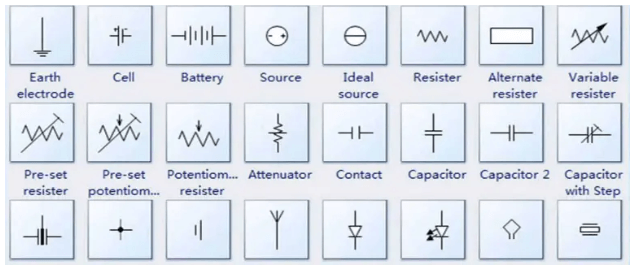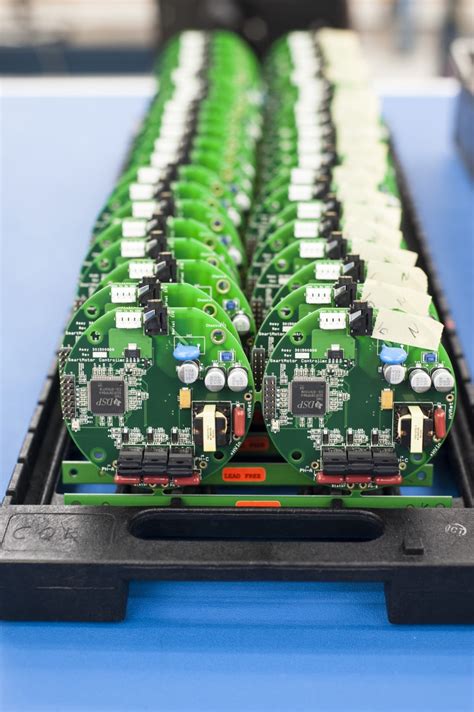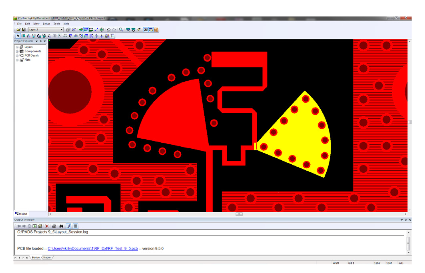Mastering Cost-Effective PCBA Manufacturing Solutions
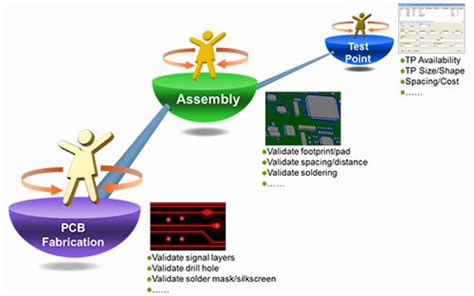
Key Takeaways
Navigating PCBA contract manufacturing requires a strategic approach to balance cost-efficiency with uncompromised quality. Three core principles define successful cost optimization: understanding PCB assembly cost drivers, implementing design-for-manufacturing (DFM) practices, and selecting partners with transparent pricing models.
"A common pitfall in PCBA projects is underestimating the total cost of ownership—always evaluate suppliers based on lifecycle support capabilities, not just per-unit pricing."
Key cost factors include component sourcing strategies, panelization efficiency, and testing protocols. Bulk purchasing of common ICs through vendor-managed inventory programs can reduce material costs by 12–18%, while optimized panel layouts minimize substrate waste. When evaluating PCB assembly partners, prioritize manufacturers offering comprehensive DFM analysis—this pre-production review typically identifies 20–30% potential cost savings through footprint standardization and process simplification.
Critical considerations for budget-conscious projects:
- Automated optical inspection (AOI) systems versus manual verification trade-offs
- Lead time flexibility impacts on expedited shipping expenses
- Conformal coating application methods affecting rework costs
For prototype-scale PCBA runs, consider split-panel manufacturing to share setup costs across multiple clients—a practice increasingly adopted by agile contract manufacturers. However, verify that mixed-lot production doesn’t compromise traceability protocols.
Tip: Request test coupon inclusion in your panel design to validate solder quality without sacrificing functional boards—a best practice that prevents costly batch failures.
While pursuing affordable PCB assembly, maintain rigorous quality checkpoints. Partner with manufacturers holding ISO 9001:2015 and IPC-A-610 certifications, ensuring their cost-saving measures align with industry reliability standards. Remember: a 5% reduction in functional yield can erase 22% of material cost savings—a crucial equation for sustainable electronics production.
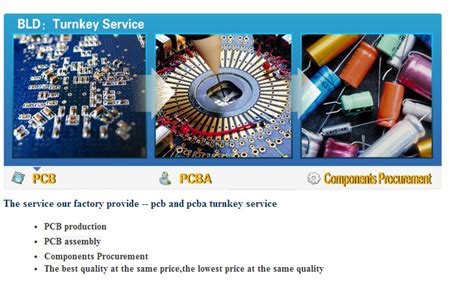
PCBA Cost Reduction Techniques
Achieving cost efficiency in PCBA (Printed Circuit Board Assembly) requires a strategic balance between technical precision and supply chain optimization. A primary focus lies in streamlining PCB assembly processes through design-for-manufacturability (DFM) principles. By collaborating with contract manufacturing partners early in the design phase, engineers can identify opportunities to simplify layouts, standardize components, and minimize material waste—directly reducing production expenses.
Material selection plays a pivotal role in cost management. Opting for generic equivalent parts instead of specialized components, where feasible, can lower procurement costs without compromising functionality. Bulk purchasing agreements for high-volume PCBA projects further drive down per-unit pricing, particularly when paired with suppliers offering tiered discounts. However, this approach demands rigorous quality audits to avoid counterfeit parts, which could escalate long-term reliability costs.
Automation is another critical lever for cost reduction. Advanced PCB assembly lines equipped with high-speed pick-and-place machines and automated optical inspection (AOI) systems minimize labor-intensive tasks while improving consistency. For instance, integrating automated solder paste application reduces rework rates by over 30% in many cases, directly trimming post-production expenses.
Additionally, optimizing testing protocols ensures defects are caught early, preventing costly rework cycles. Implementing first-pass yield (FPY) improvement programs with contract manufacturing partners can reduce scrap rates and accelerate time-to-market. For example, combining in-circuit testing (ICT) with functional testing creates layered quality checks, addressing both assembly flaws and design-related failures.
Finally, leveraging economies of scale through consolidated production runs—rather than fragmented batches—lowers setup costs and improves resource utilization. Partnering with manufacturers that offer flexible scheduling and inventory management solutions, such as just-in-time (JIT) delivery, ensures alignment with demand fluctuations without overstocking.
By prioritizing these strategies, businesses can navigate the complexities of PCBA cost reduction while maintaining the integrity of their electronic products.
Streamlining Electronics Production Costs
Effective cost management in PCBA (Printed Circuit Board Assembly) requires a strategic balance between technical precision and economic efficiency. By optimizing PCB assembly processes, manufacturers can achieve significant savings without compromising quality. Three core strategies dominate this approach: design simplification, component standardization, and supply chain consolidation.
Design simplification reduces complexity in circuit layouts, minimizing material waste and assembly time. For example, consolidating redundant components or adopting modular designs can lower PCBA costs by 12–18%. Similarly, component standardization leverages commonly available parts, avoiding costly custom orders and reducing lead times. A comparative analysis highlights the impact:
| Cost Factor | Traditional Approach | Optimized Approach | Savings (%) |
|---|---|---|---|
| Material Procurement | Custom Components | Standardized Parts | 22 |
| Assembly Time | 8 Hours | 5.5 Hours | 31 |
| Testing Iterations | 3 Rounds | 1.5 Rounds | 50 |
Supply chain consolidation further enhances savings by partnering with vendors offering bundled services—such as component sourcing, PCB assembly, and testing—under a single contract. This reduces logistical overhead and improves economies of scale. However, cost-cutting measures must align with quality benchmarks; selecting ISO-certified PCBA partners ensures adherence to industry standards while maintaining affordability.
Transitioning to automated assembly lines and predictive maintenance systems also contributes to long-term savings. For instance, automated pick-and-place machines reduce human error rates by 40%, directly lowering rework costs. By integrating these strategies, businesses can achieve a 25–30% reduction in overall PCBA expenses, positioning themselves competitively in fast-paced electronics markets.
Quality Assurance in Contract Manufacturing
In PCBA contract manufacturing, maintaining rigorous quality standards is non-negotiable—even when prioritizing cost efficiency. A robust quality assurance (QA) framework ensures that cost-cutting measures do not compromise the reliability of PCB assembly processes. Leading manufacturers implement multi-layered inspection protocols, including automated optical inspection (AOI) and X-ray testing, to detect defects in PCBA components early in production. These steps minimize costly rework and post-delivery failures, directly aligning with long-term affordability goals.
Proactive supplier audits play a critical role in QA, ensuring raw materials meet industry certifications such as IPC-A-610 or ISO 9001. By partnering with vendors that adhere to these benchmarks, manufacturers reduce risks of component failures that could escalate expenses. Additionally, integrating design for manufacturability (DFM) reviews during the prototyping phase identifies potential assembly challenges, streamlining PCB assembly workflows before full-scale production begins.
Transitioning from manual to automated testing systems further enhances consistency. For instance, inline functional testing (ICT) verifies electrical performance at multiple PCBA stages, catching issues like soldering defects or short circuits. This preventive approach not only safeguards product integrity but also avoids delays from post-production troubleshooting.
Balancing cost and quality requires transparency in QA reporting. Reputable contract manufacturers provide real-time data analytics, offering clients visibility into yield rates and defect trends. This data-driven collaboration enables continuous process optimization, ensuring that PCBA projects remain both budget-friendly and compliant with technical specifications.
Ultimately, effective QA in PCBA contract manufacturing hinges on aligning quality protocols with client-specific requirements. By prioritizing traceability and process validation, manufacturers deliver solutions that uphold performance standards without inflating costs—proving that affordability and reliability in electronics production are not mutually exclusive.
Affordable PCBA Solutions Guide
Navigating PCBA (Printed Circuit Board Assembly) manufacturing while maintaining affordability requires a strategic blend of design optimization, supplier collaboration, and process efficiency. For businesses seeking PCB assembly solutions that align with budget constraints without compromising performance, leveraging design for manufacturability (DFM) principles is critical. By simplifying board layouts, standardizing component sizes, and minimizing complex multilayer structures, engineers can reduce material waste and assembly time—directly lowering PCBA costs.
Another cornerstone of cost-effective solutions lies in material sourcing strategies. Partnering with suppliers that offer competitive pricing for high-volume orders or consignment inventory models ensures access to quality components at reduced rates. Additionally, adopting automated PCB assembly workflows—such as surface-mount technology (SMT) lines—optimizes precision and throughput, mitigating human error and rework expenses.
For low- to mid-volume production runs, prototyping partnerships with PCBA contract manufacturers can yield significant savings. Many providers offer tiered pricing structures, where bundling prototyping with full-scale production orders reduces per-unit costs. Implementing test-as-you-build methodologies further prevents costly post-production defects, ensuring compliance with quality benchmarks early in the process.
Finally, transparent communication with manufacturers about cost drivers—such as lead times, solder mask requirements, and testing protocols—enables tailored solutions. Prioritizing suppliers with PCB assembly expertise in your industry ensures alignment with technical standards while avoiding over-engineering. By balancing these strategies, businesses can achieve scalable, affordable PCBA outcomes without sacrificing reliability or performance.
Choosing Budget-Friendly PCBA Partners
Selecting the right PCBA partner requires balancing financial efficiency with technical competency. While cost reduction remains a priority, partnering with manufacturers that lack expertise in PCB assembly processes can lead to delayed timelines or subpar product performance. Start by assessing a vendor’s manufacturing capabilities—such as surface-mount technology (SMT) compatibility, component sourcing networks, and quality certifications like ISO 9001. These factors directly influence both production scalability and long-term cost savings.
A common pitfall is prioritizing upfront quotes over holistic value. For instance, suppliers offering lower PCBA rates may lack in-house testing facilities, forcing clients to outsource quality checks—a hidden expense. Instead, opt for partners with integrated automated optical inspection (AOI) systems and functional testing protocols. This ensures defects are identified early, reducing rework costs and material waste.
Geographic location also plays a role. Local PCB assembly providers minimize logistics delays, while overseas vendors might offer competitive labor rates. However, consider tariffs, shipping complexities, and communication barriers—these can erode initial savings. Hybrid models, where prototyping occurs domestically and mass production shifts offshore, often strike an effective balance.
Finally, review contractual flexibility. Partners willing to adjust order volumes or adopt just-in-time (JIT) inventory strategies help align expenses with project demands. Transparent pricing models that break down PCBA costs—such as solder paste usage, stencil fees, and component procurement—enable smarter budgeting. By prioritizing vendors that blend technical rigor with adaptable financial terms, businesses can secure cost-effective partnerships without compromising on reliability.
Balancing Cost and Quality in PCBA
Achieving the optimal equilibrium between cost efficiency and quality assurance in PCBA (Printed Circuit Board Assembly) requires a strategic approach to supply chain management and production process optimization. While reducing expenses is critical in competitive electronics markets, compromising on component reliability or manufacturing standards often leads to hidden costs from rework, returns, or brand reputation damage.
A foundational step involves designing for manufacturability (DFM), which minimizes material waste and assembly complexity. By collaborating with PCB assembly partners during the prototyping phase, engineers can identify opportunities to standardize components, reduce layer counts, or optimize panel layouts – adjustments that lower PCBA costs without sacrificing performance. Advanced manufacturers leverage automated optical inspection (AOI) systems and in-circuit testing (ICT) protocols to detect defects early, preventing costly post-production corrections.
Material procurement strategies also play a pivotal role. Bulk purchasing of common ICs or capacitors through verified supplier networks can yield 12-18% cost savings, while maintaining traceability for quality compliance. However, component substitution requires rigorous validation to avoid compatibility issues that might surface during thermal stress testing or functional validation phases.
The choice between high-mix low-volume (HMLV) and dedicated production lines significantly impacts both cost structures and quality consistency. For mid-range production batches (5,000-20,000 units), hybrid models combining automated SMT placement with manual final assembly often deliver the best cost-per-unit ratios while preserving precision.
Transitioning to cost-effective PCBA solutions demands transparent communication with contract manufacturers about quality benchmarks (IPC-A-610 Class 2/3) and cost drivers (NRE fees, MOQ requirements). Third-party certifications like ISO 9001 and IATF 16949 serve as reliable indicators of a partner’s ability to maintain this balance, particularly when scaling from prototype to mass production stages.
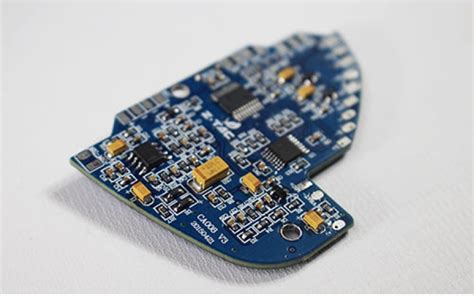
Key PCBA Manufacturing Cost Factors
Understanding the primary cost drivers in PCB assembly (PCBA) is critical for optimizing electronics production budgets. At the core, material expenses account for 40–60% of total costs, with high-frequency substrates, specialized components, and solder materials directly influencing pricing. For instance, advanced surface-mount technology (SMT) components like micro-BGAs or QFNs often require precision placement tools, which escalate equipment depreciation costs.
Labor and overhead expenses also play a significant role, particularly in regions with higher wage standards. While automated PCBA lines reduce manual intervention, setups for mixed-technology boards (combining through-hole and SMT components) demand skilled technicians for quality validation. Additionally, production volume inversely affects per-unit costs—high-volume orders benefit from economies of scale, whereas low-volume prototypes incur higher setup fees.
Design complexity further impacts budgets. Multi-layer boards with HDI (high-density interconnect) features or impedance-controlled traces necessitate advanced fabrication techniques, increasing both time and material usage. Similarly, compliance certifications—such as ISO 9001 or IPC-A-610 standards—add verification steps that extend timelines but ensure reliability.
Supply chain stability is another underrated factor. Component shortages or delays in sourcing high-temperature laminates can stall production, leading to expedited shipping fees. Partnering with PCB assembly providers that maintain robust supplier networks mitigates these risks. Finally, geographic location influences logistics costs; offshore manufacturing may offer lower labor rates but introduces longer lead times and import duties.
By analyzing these variables, businesses can identify cost-saving opportunities without compromising the technical rigor required for modern PCBA projects.

Avoiding Common Cost Overruns
Navigating PCBA contract manufacturing requires foresight to prevent budget deviations that erode profitability. One prevalent pitfall stems from design-related inefficiencies, where inadequate PCB assembly design reviews lead to rework cycles. Implementing Design for Manufacturability (DFM) checks early ensures components are optimally placed, minimizing post-production adjustments that inflate costs. For instance, improperly spaced surface-mount devices (SMDs) may necessitate manual soldering, adding labor expenses and delaying timelines.
Another critical area involves component sourcing volatility. Overreliance on single-source suppliers for specialized parts can trigger price surges or stockouts. Partnering with PCBA manufacturers that maintain multi-tiered supplier networks mitigates this risk, ensuring access to alternative vendors during shortages. Additionally, adopting lifecycle management tools to identify near-obsolete components prevents last-minute substitutions, which often incur premium pricing.
Unexpected engineering change orders (ECOs) also contribute significantly to overruns. Clear communication protocols between design teams and PCB assembly providers reduce ambiguities in specifications. For example, defining tolerance thresholds for analog circuits or power delivery systems upfront avoids costly mid-production redesigns.
Finally, underestimating testing requirements can escalate expenses. While skipping in-circuit testing (ICT) or functional testing might lower initial quotes, defective units discovered post-assembly amplify rework costs. A balanced approach—leveraging automated optical inspection (AOI) for high-volume batches and sample-based ICT for validation—optimizes quality control investments.
By addressing these focal points, manufacturers can align PCBA project execution with budgetary constraints while maintaining rigorous quality standards. Proactive planning, coupled with collaborative supplier relationships, forms the cornerstone of sustainable cost management in electronics production.
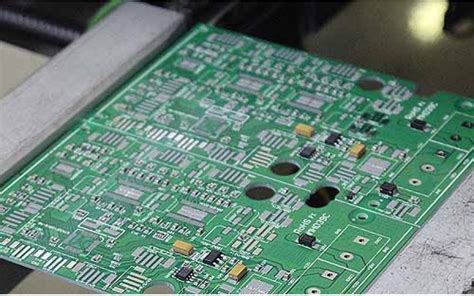
Conclusion
Navigating the complexities of PCBA contract manufacturing requires a strategic balance between cost efficiency and technical precision. By prioritizing partnerships with manufacturers that offer transparent pricing models and robust PCB assembly capabilities, businesses can mitigate financial risks while maintaining quality benchmarks. The integration of design-for-manufacturability (DFM) principles, coupled with advanced procurement strategies for components, ensures that PCBA projects remain within budget without compromising reliability.
A critical factor in achieving affordability lies in leveraging economies of scale through consolidated production runs and standardized processes. However, cost optimization should never come at the expense of rigorous testing protocols or compliance certifications, which safeguard product integrity. Manufacturers that employ automated PCB assembly lines and real-time yield monitoring systems often demonstrate superior cost-control outcomes, as these technologies minimize waste and accelerate time-to-market.
When selecting a PCBA partner, evaluate their ability to adapt to fluctuating demand cycles and their track record in managing supply chain disruptions. Transparent communication about material lead times, alternative sourcing options, and value engineering insights can further reduce hidden expenses. Ultimately, the goal is to build a collaborative relationship where both parties align on cost targets and performance metrics, ensuring that affordability and quality coexist seamlessly in every production batch.
By adopting these strategies, businesses can transform PCBA contract manufacturing from a cost center into a competitive advantage, driving innovation while maintaining financial discipline across electronics production cycles.

FAQs
How can I reduce costs in PCBA without compromising quality?
Prioritize suppliers with vertically integrated manufacturing processes and automated PCB assembly lines. Implementing design-for-manufacturability (DFM) principles early minimizes rework costs. Many contractors offer tiered pricing models for batch orders while maintaining ISO-certified quality controls.
What factors most significantly impact PCBA project pricing?
Component sourcing complexity accounts for 35-50% of total costs, followed by assembly technology requirements (SMT vs. through-hole). Board layer count and testing protocols—particularly automated optical inspection (AOI) and functional testing—also substantially influence final quotes.
How do reliable manufacturers ensure quality in budget PCB assembly?
Reputable providers combine real-time process monitoring with MIL-STD-883G compliant testing. Look for partners offering cross-functional DFM analysis and material traceability systems. Third-party certifications like IPC-A-610 Class 2/3 provide objective quality benchmarks.
What are common cost overruns in PCBA contracts?
Unexpected engineering change orders (ECOs) contribute to 72% of budget overages according to industry surveys. Clear prototype validation protocols and fixed-scope pricing models help mitigate risks. Always verify suppliers’ component lifecycle management capabilities to avoid last-minute substitution fees.
When should I consider hybrid PCB assembly approaches?
Combining automated SMT lines with manual through-hole assembly proves cost-effective for mixed-technology boards. This strategy reduces tooling expenditures for low-volume projects while maintaining high-precision soldering standards for critical components.
Explore Customized PCBA Solutions
Ready to streamline your electronics manufacturing? Our team develops cost-optimized assembly strategies tailored to your project requirements. Discover how our PCB assembly services enhance value – please click here for personalized consultation.


